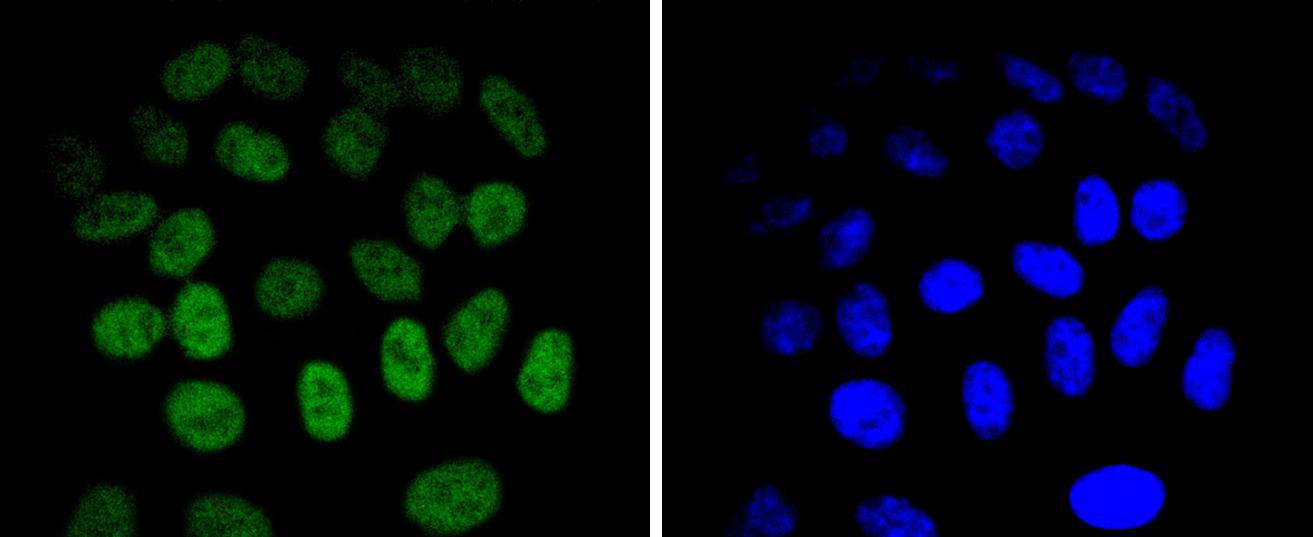Product Detail
Product NameJunB Rabbit mAb
Clone No.SD081-08
Host SpeciesRecombinant Rabbit
Clonality Monoclonal
PurificationProA affinity purified
ApplicationsWB, ICC/IF, IP
Species ReactivityHu, Ms, Rt
Immunogen Descrecombinant protein
ConjugateUnconjugated
Other NamesActivator protein 1 antibody AP 1 antibody AP1 antibody Jun B antibody Jun B proto oncogene antibody Jun B protooncogene antibody Junb antibody JunB proto oncogene antibody JunB protoncogene 9 antibody JunB protooncogene antibody JUNB_HUMAN antibody Transcription factor jun B antibody Transcription factor jun-B antibody Transcription factor junB antibody
Accession NoSwiss-Prot#:P17275
Uniprot
P17275
Gene ID
3726;
Calculated MW43 kDa
Formulation1*TBS (pH7.4), 1%BSA, 40%Glycerol. Preservative: 0.05% Sodium Azide.
StorageStore at -20˚C
Application Details
WB: 1:1,000-1:2,000
ICC: 1:50-1:200
Western blot analysis of JunB on different lysates using anti-JunB antibody at 1/1,000 dilution. Positive control: Lane 1: U937 Lane 2: THP-1
ICC staining JunB in Hela cells (green). The nuclear counter stain is DAPI (blue). Cells were fixed in paraformaldehyde, permeabilised with 0.25% Triton X100/PBS.
ICC staining JunB in HepG2 cells (green). The nuclear counter stain is DAPI (blue). Cells were fixed in paraformaldehyde, permeabilised with 0.25% Triton X100/PBS.
The c-Jun proto-oncogene was first identified as the cellular homolog of the avian sarcoma virus v-Jun oncogene. The c-Jun protein along with c-Fos is a component of the AP-1 transcriptional complex. c-Jun can form either Jun/Jun homodimers or Jun/Fos heterodimers via the leucine repeats in both proteins. Homo- and heterodimers bind to the TGACTCA consensus sequence present in numerous promoters and initially identified as the phorbol ester tumor promoter response element (TRE). Two additional genes, Jun B and Jun D have been shown to be almost identical to c-Jun in their C-terminal regions, which are involved in dimerization and DNA binding, whereas their N-terminal domains, which are involved in transcriptional activation, diverge. All three form heterodimers among themselves and with c-Fos and other members of the Fos gene family.
If you have published an article using product 49169, please notify us so that we can cite your literature.





 Yes
Yes



